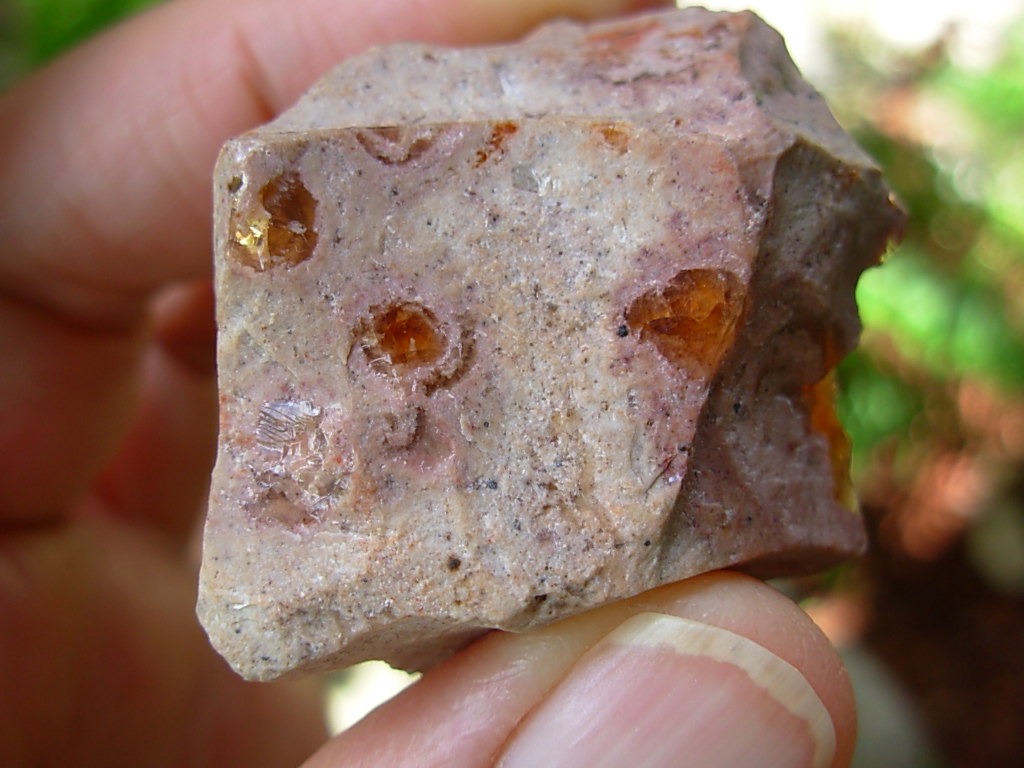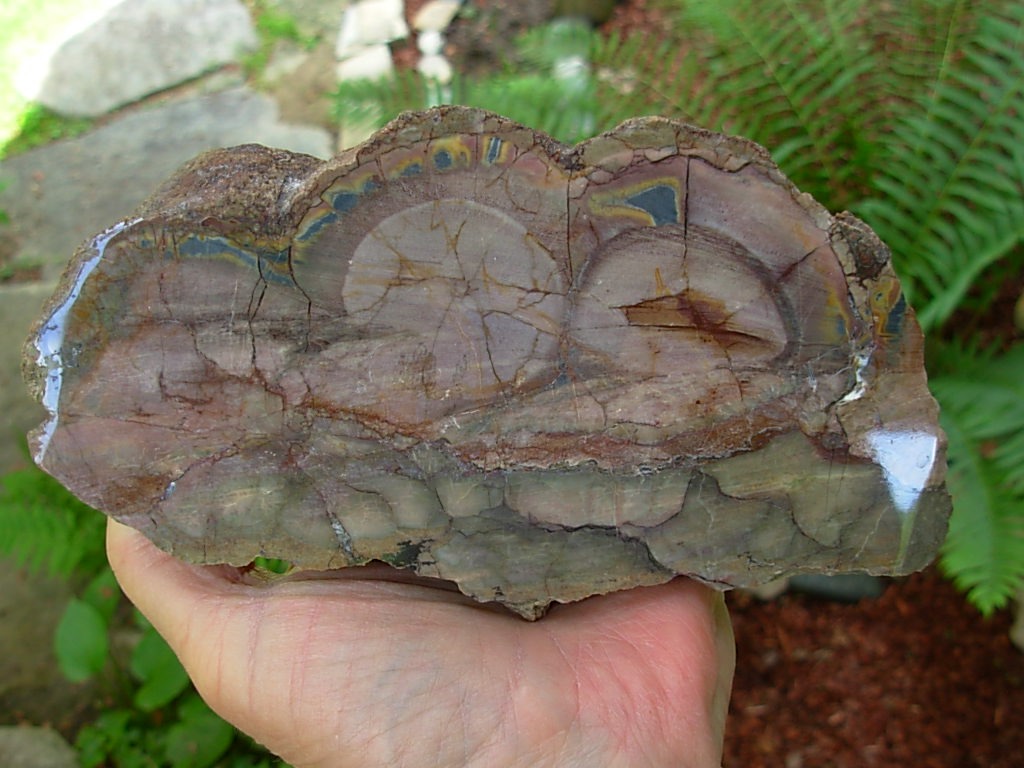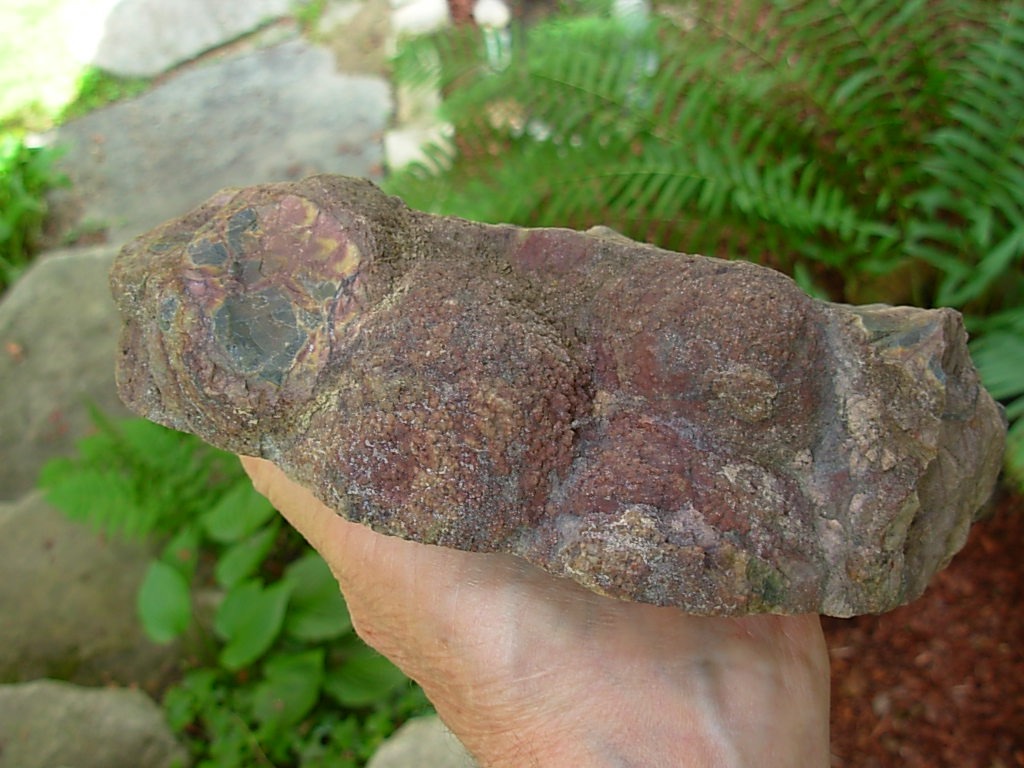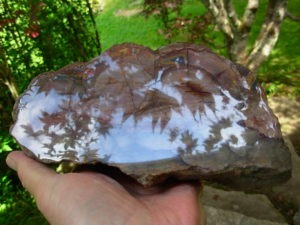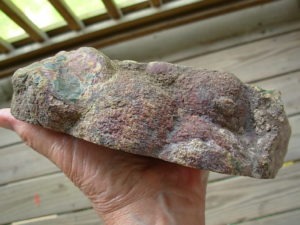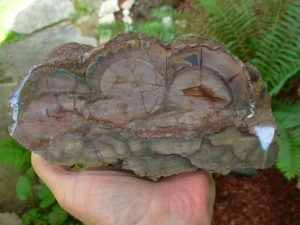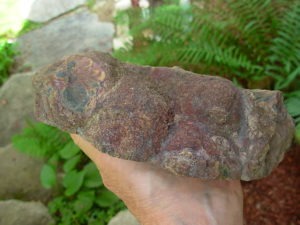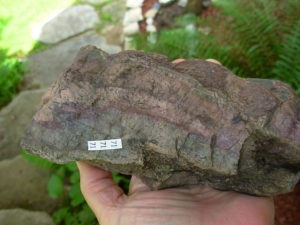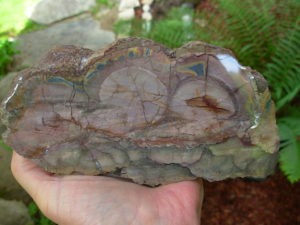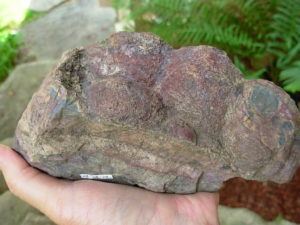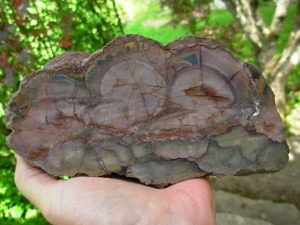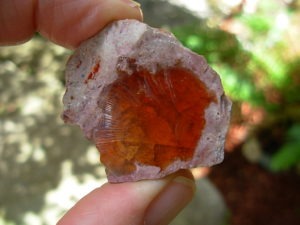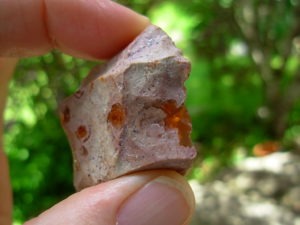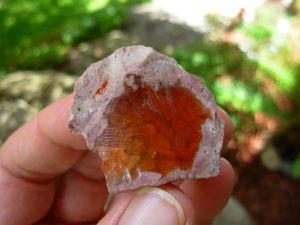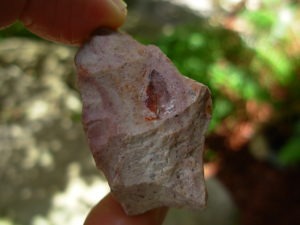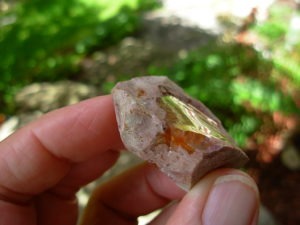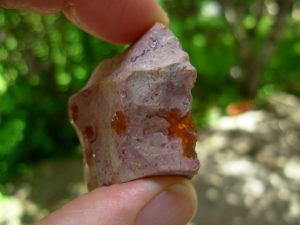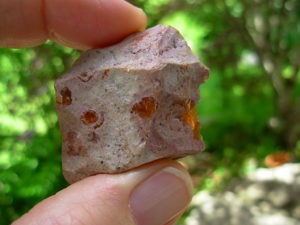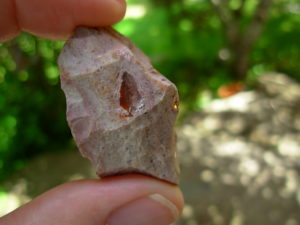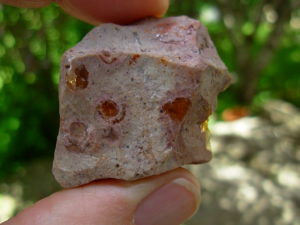Rhyolite
Rhyolite is a felsic extrusive rock (extrusive rocks are formed from lava which is above the earth’s surface). Due to the high silica content, rhyolite lava is very a thick, sticky consistency (between solid and liquid). It flows slowly and tends to pile up and form lava domes. If rhyolite magma is gas rich it can erupt explosively. Extremely porous rhyolite lava flows may develop which allows degassing to occur which may collapse the flow, forming obsidian. Rhyolite is the volcanic equivalent of granite which is a felsic intrusive rock (intrusive rocks are formed from magma which is below the earth’s surface).
Eruptions of granitic magma can produce rhyolite, pumice, obsidian, or tuff. These rocks have similar compositions but different cooling conditions. Explosive eruptions produce tuff or pumice. Effusive eruptions (slow flowing like the Hawaiian volcano flows) produce rhyolite or obsidian if the lava cools rapidly. These different rock types can all be found in a single eruption.
Many rhyolites form from granitic magma that has partially cooled below the surface. During a magma eruption, rocks with two distinctly different grain sizes can form. The large crystals that form below the surface are called Phenocrysts. The small crystals that were formed on the surface are called groundmass. Mineral content in groundmass is generally quartz and plagioclase, with lesser amounts of orthoclase, biotite, amphibole (augite), pyroxene (hornblende), and glass. Phenocrysts of plagioclase and quartz, often with amphibole or biotite and possibly orthoclase may be present as well.
Gem deposits can be found in rhyolite vugs. The thick granitic lava that forms rhyolite often cools and pockets of gas are trapped inside the lava. As the lava cools the trapped gas forms cavities known as vugs. Hydrothermal gases or ground water that flow into the lava deposit minerals and materials that precipitate in the vugs. This is how deposits of red beryl, topaz, agate, jasper, garnets and opal are formed. Rockhounds have learned this and are always on the lookout for rhyolite vugs.
Item # 71RHY06200052
Polished Face Rhyolite from the Pacific NorthWest
$58.00

Here's an excellent polished face specimen of a layered and botryoidal rhyolite from the great Pacific NorthWest. We procured this specimen in 1999 from a mineral dealer at a show in Quartzsite, Arizona. It has been in our personal collection for over 20 years now. The cut and polished face has an extremely shiny polished finish while the top shows the large botryoidal formations. The back shows the layer formation. This is a very nice display specimen of Rhyolite!
This specimen weighs 41.4 oz or 2.59 lbs (1.175kg) and measures 7.5 x 3.5 x 2 inches (19 x 8.9 x 5.1cm)
Item #6FIROPL06200001
Fire Opal in Rhyolite from Mexico
$49.00

Fire Opal is the name used for opal that is colored. It is not a name given because of a rainbow phenomenon. The gemstone cabochon may or may not have the rainbow flash, but it has stunning color usually ranging from yellow, to orange, to red. The color of these gemstone cabochons comes from the presence of iron. Fire Opal is mined in the Mexican states of Queretaro, Hidalgo, Guerrero, Michoacan, Julisio, Chihuahua and San Luis Potosi. Fire Opal is regarded as the national gemstone of Mexico. Much of the fire opal found in Mexico is in a rhyolite host rock. It is difficult to remove the opal from the rhyolite without damage. So, some cutters simply cut a cab of rhyolite with a fire opal window in the dome. Cabs with this style of cutting are known as "cantera opal".
This specimen weighs 1.12 oz (32g) and measures 1.64 x 1.33 x 0.94 inches (41.7 x 33.9 x 23.9mm)

